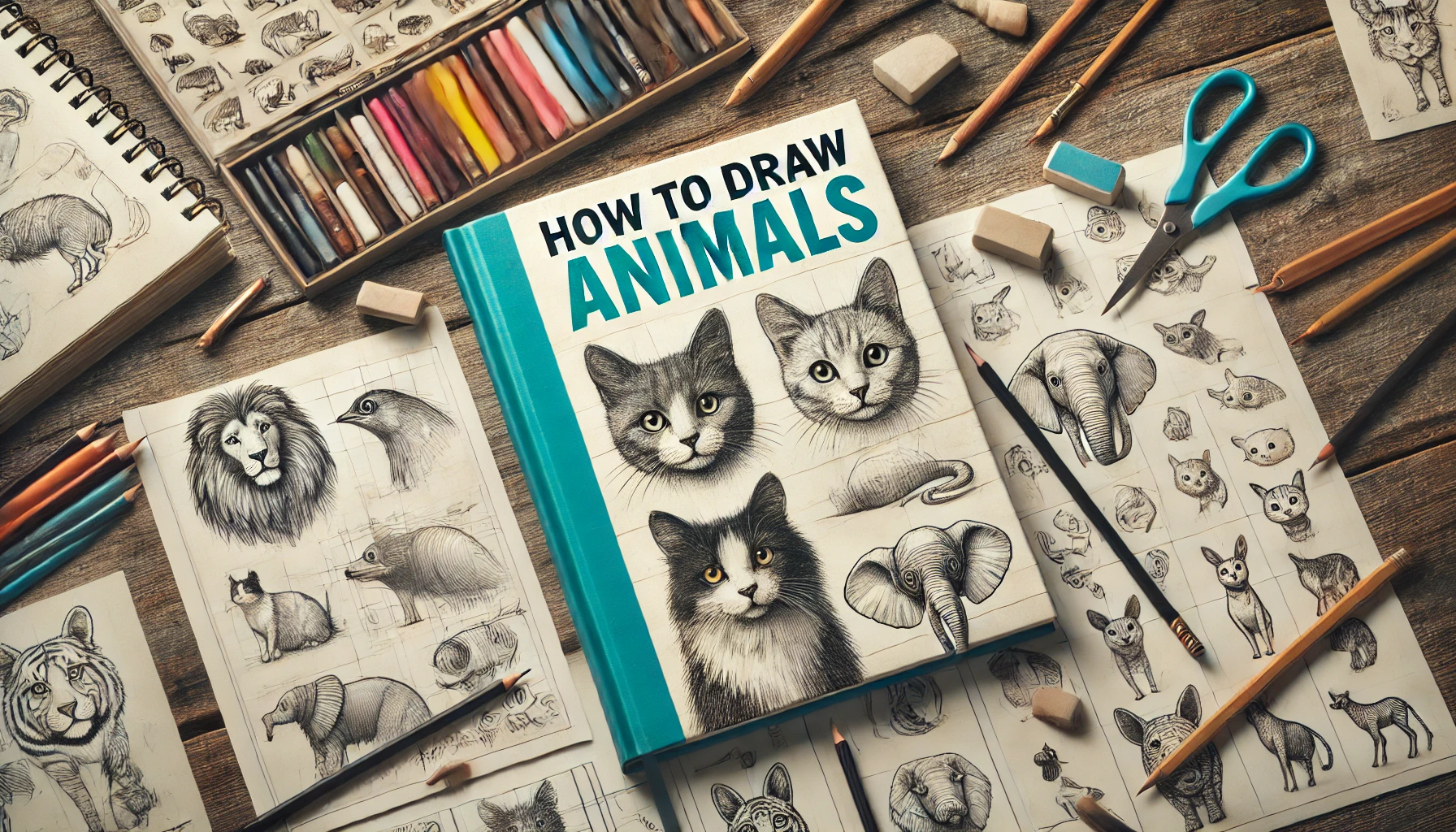Entertainment
How to draw animals book: A comprehensive guide

Learning to draw animals can be an incredibly rewarding experience for both beginners and experienced artists. A well-structured “how to draw animals book” can provide step-by-step instructions, tips, and techniques to help anyone improve their drawing skills.
This article explores the key components of a successful drawing of animals book, from essential tools and materials to advanced techniques, ensuring that it caters to all skill levels.
Introduction to drawing animals
Drawing animals not only enhances artistic skills but also deepens an understanding of animal anatomy and movement. It fosters creativity and observation skills, allowing artists to capture the essence of various creatures.
Benefits of how to draw animals book
A dedicated book on how to draw animals offers a structured approach to learning. It provides clear instructions, visual aids, and exercises that guide readers through the drawing process. Such a book can be a valuable resource for self-study and practice.
Essential tools and materials
To start drawing animals effectively, having the right tools and materials is crucial. Basic essentials include a range of pencils, erasers, and high-quality drawing paper. Additionally, materials like blending stumps, colored pencils, and a sketchbook can enhance the drawing experience.
Equipping yourself with these tools ensures a solid foundation for creating detailed and realistic animal drawings.
Drawing tools
To start drawing animals, certain tools are essential:
- Pencils: A range of pencils from H (hard) to B (soft) for varying line thickness and shading.
- Erasers: Kneaded and vinyl erasers for correcting mistakes and adding highlights.
- Paper: High-quality drawing paper that can handle various mediums without smudging or tearing.
Additional materials
While basic tools are crucial, additional materials can enhance the drawing experience:
- Blending stumps: For smooth shading and blending.
- Colored pencils: To add color and depth to animal drawings.
- Sketchbook: For practice and quick sketches.
Basic drawing techniques
A fundamental step in drawing animals is breaking down complex forms into simple shapes. Circles, ovals, squares, and triangles form the basis of most animal bodies. An animal book should emphasize practicing these shapes to build a strong foundation.
Proportions and anatomy
Proper proportions and anatomy are essential for realistic animal drawings. The book should cover the basic anatomy of different animals, focusing on the proportions of the head, body, limbs, and tail. Understanding muscle structure and skeletal forms is also crucial for accurate depictions.
Step-by-step drawing instructions
Mastering the art of drawing animals involves following clear, step-by-step instructions. This section provides detailed guides for drawing various animal species, breaking down complex forms into simple shapes, and gradually adding details.
By following these structured steps, artists can create accurate and lifelike animal drawings, building confidence and improving their skills along the way.
Drawing different animal species
A comprehensive animal book should include step-by-step instructions for drawing various animal species. This section can be divided into categories such as:
- Mammals: Cats, dogs, horses, elephants, etc.
- Birds: Eagles, sparrows, parrots, etc.
- Reptiles: Snakes, lizards, turtles, etc.
- Amphibians: Frogs, salamanders, etc.
- Aquatic animals: Fish, dolphins, whales, etc.
Example: Drawing a cat
- Basic shapes: Start with a circle for the head and an oval for the body. Add guidelines for the facial features.
- Outline: Draw the basic outline of the cat, including the ears, tail, and limbs.
- Details: Add details such as the eyes, nose, and fur texture.
- Shading: Use different pencil grades to add shading and depth, making the drawing more realistic.
Advanced techniques
Advanced shading techniques can bring animal drawings to life. A good book will cover various shading methods such as hatching, cross-hatching, and stippling. Additionally, understanding how to depict different textures, like fur, scales, and feathers, is essential for realistic drawings.
Capturing movement and expression
Drawing animals in motion or capturing their expressions adds dynamism and personality to the artwork. Techniques for portraying movement, such as drawing action lines and understanding muscle dynamics, should be included.
Tips for capturing expressions through the eyes and body language can also enhance the realism of the drawings.
Practice exercises and projects
To reinforce learning and build confidence, practice exercises, and projects are essential. This section offers guided exercises focusing on specific animal features, as well as creative projects and challenges that encourage the application of skills.
Guided practice
To reinforce learning, an animal book should include guided practice exercises. These can involve drawing specific parts of animals, like eyes, paws, or wings, to build confidence and skill.
Projects and challenges
Including projects and challenges encourages readers to apply their skills creatively. For example, a project might involve drawing an animal in its natural habitat or creating a series of animal portraits. These activities promote creativity and help solidify the techniques learned.
Inspirational galleries
An inspirational gallery featuring works from various artists can motivate readers. Seeing different styles and techniques can inspire readers to develop their unique artistic voice.
Reader contributions
Encouraging readers to share their drawings and including a section for reader contributions can create a sense of community. It provides a platform for feedback and growth, making the learning process interactive and engaging.
Final thoughts
A well-crafted animal book is an invaluable resource for aspiring artists. By covering essential tools, basic techniques, step-by-step instructions, and advanced methods, such a book can guide readers through the exciting journey of drawing animals.
Whether for beginners or experienced artists, this comprehensive guide provides the tools and knowledge needed to create stunning animal artwork. Embrace the world of animal drawing and unlock your artistic potential with the right guidance and practice. Also, here are some similar articles that you might find useful:
